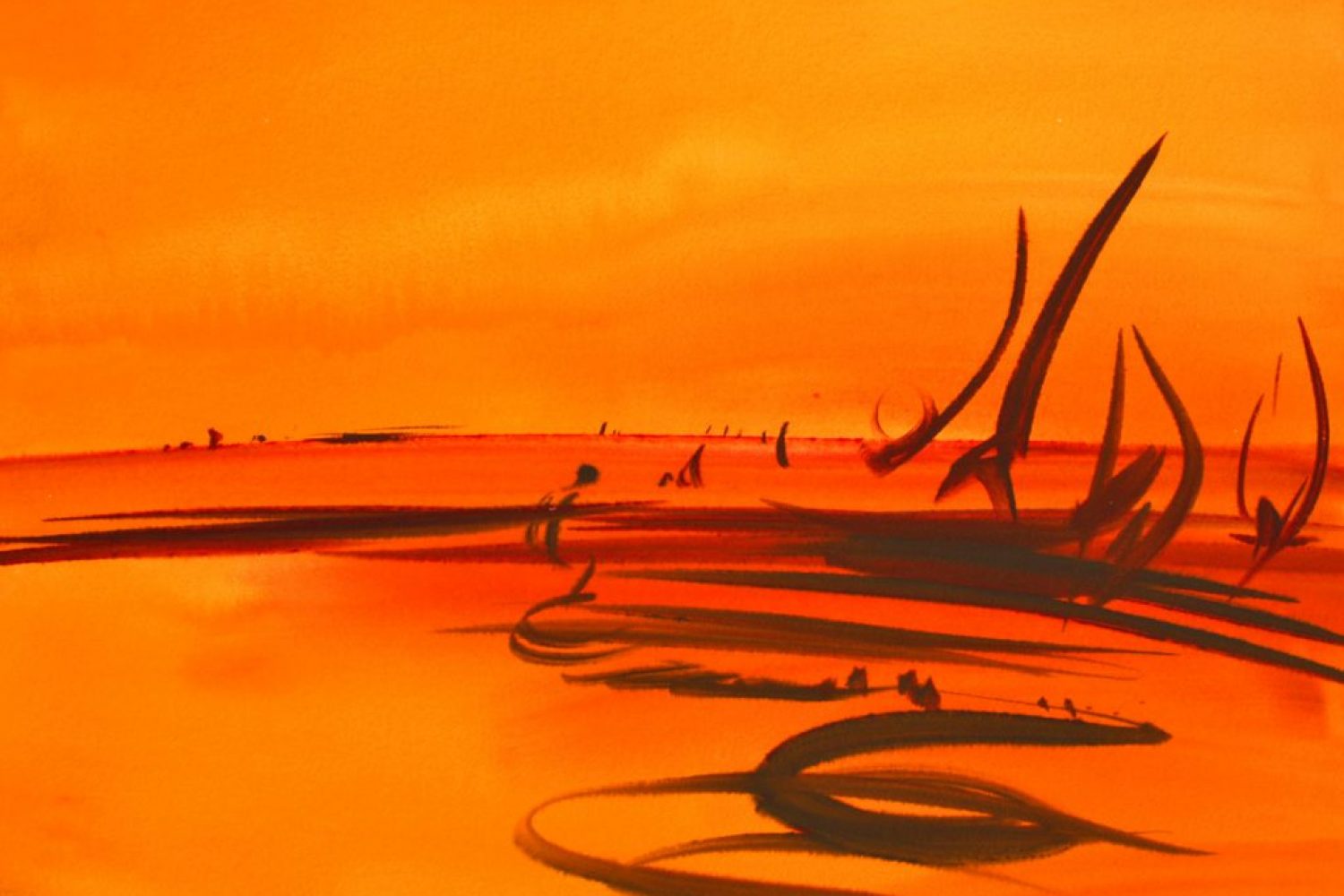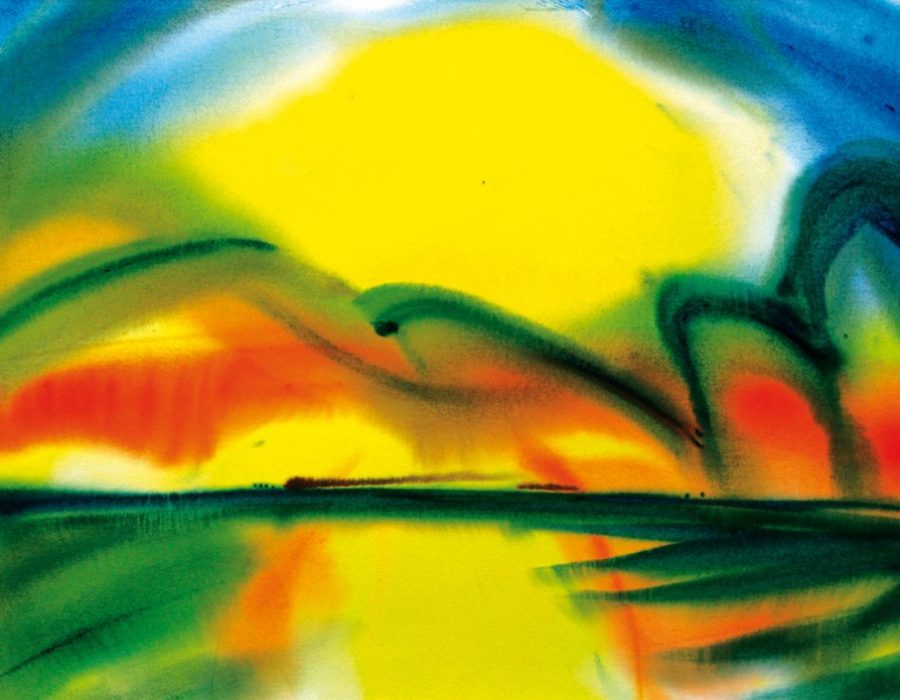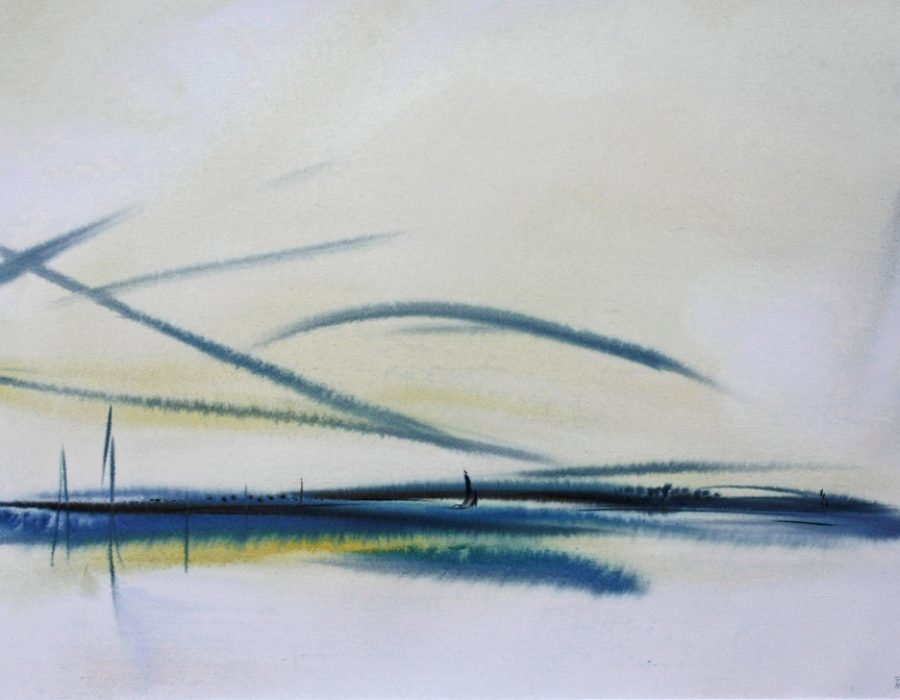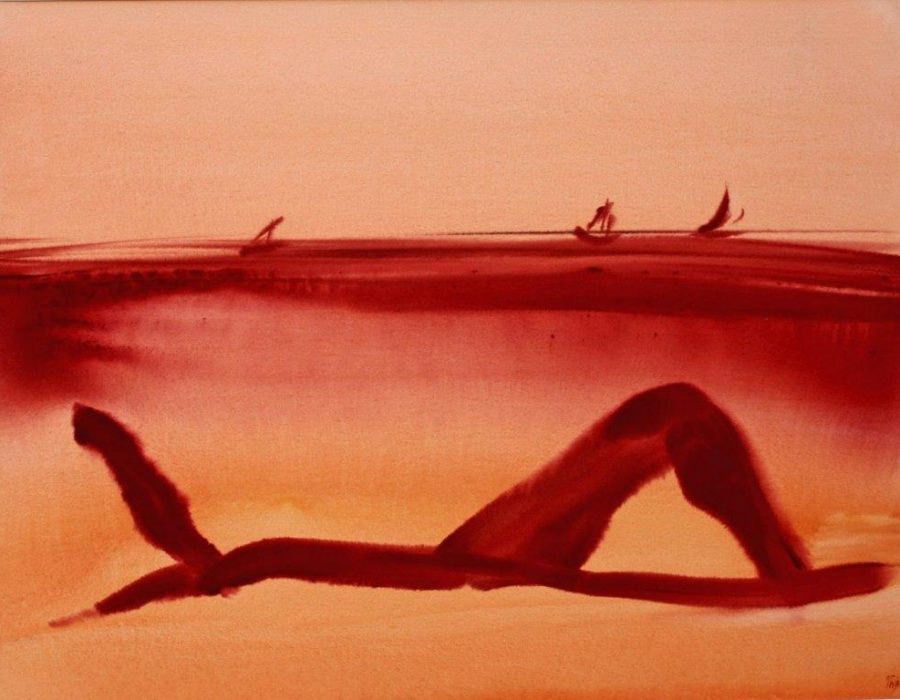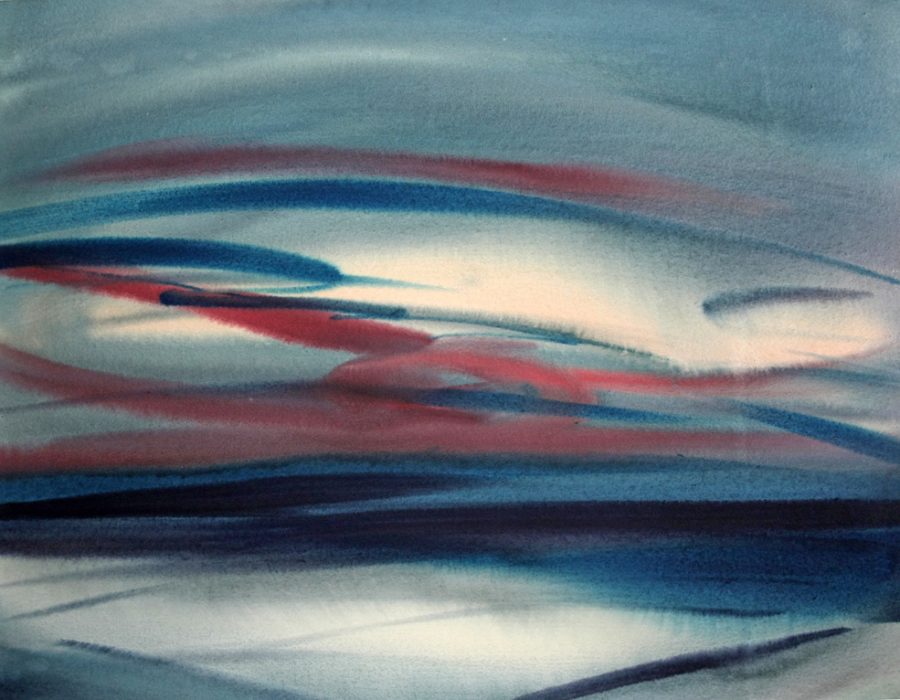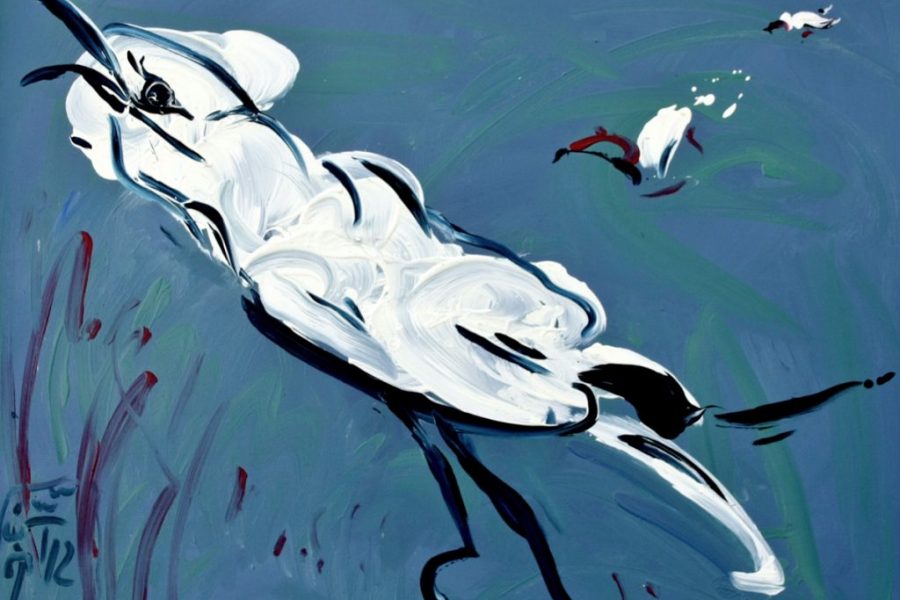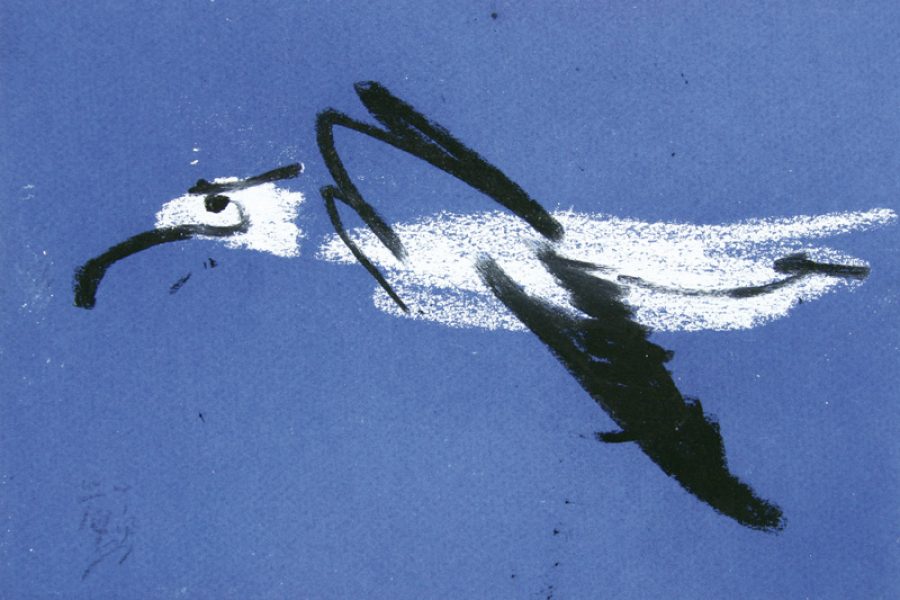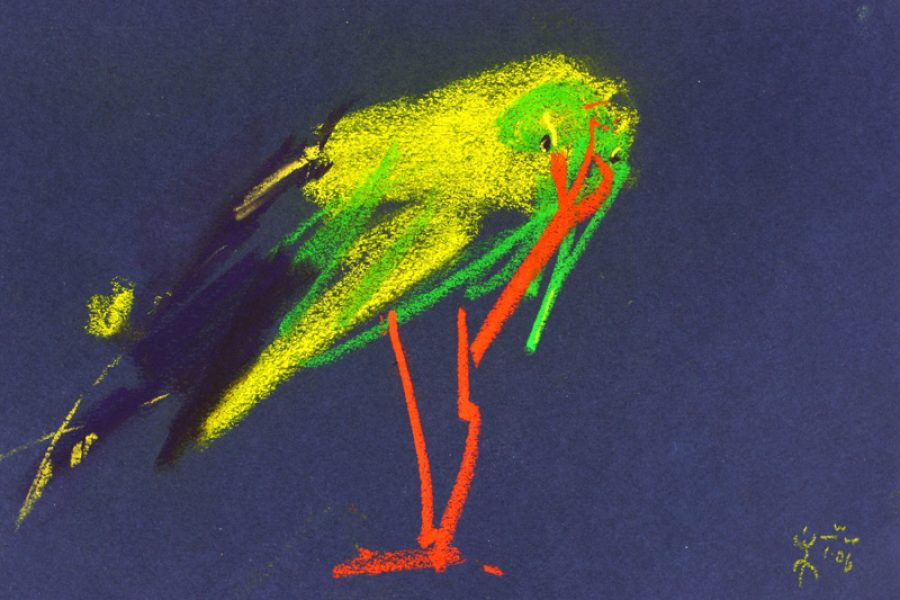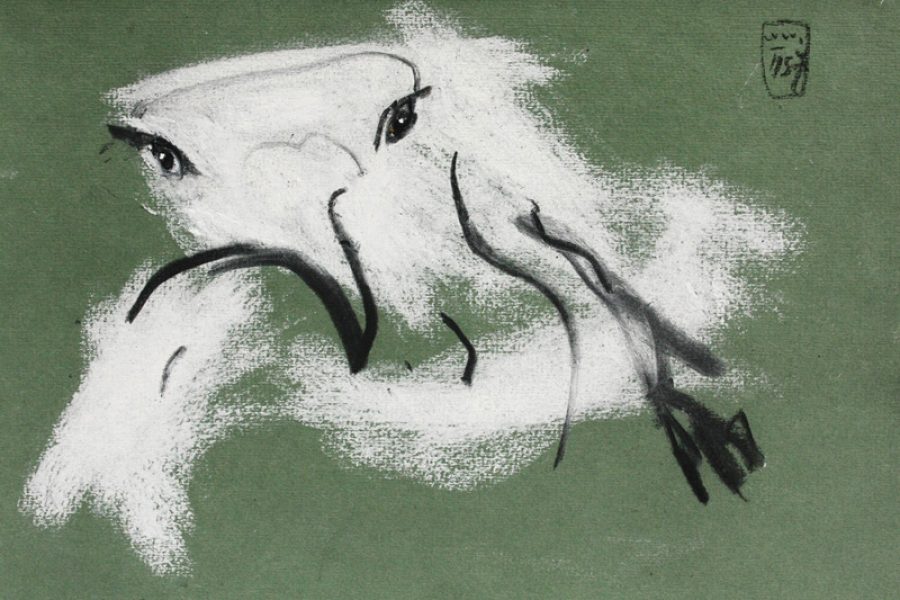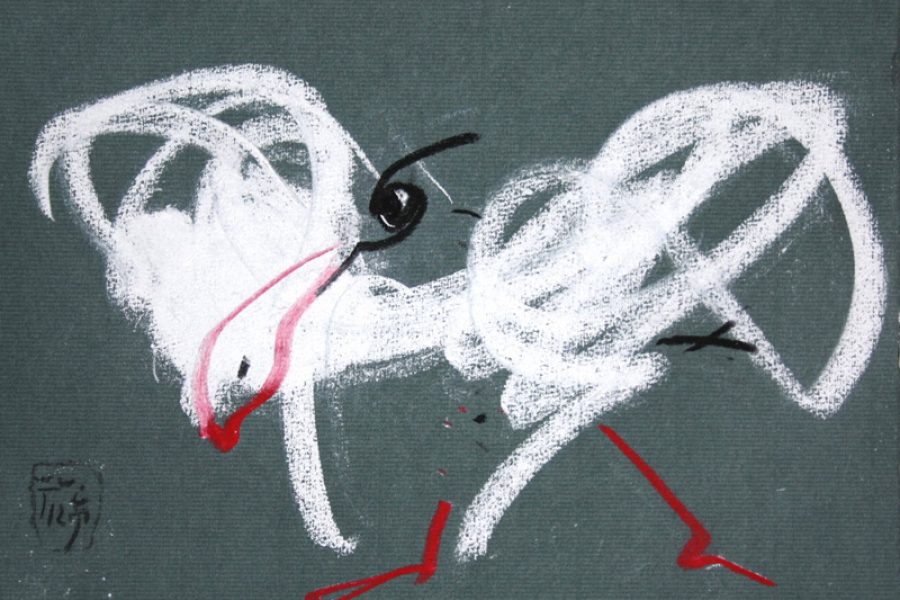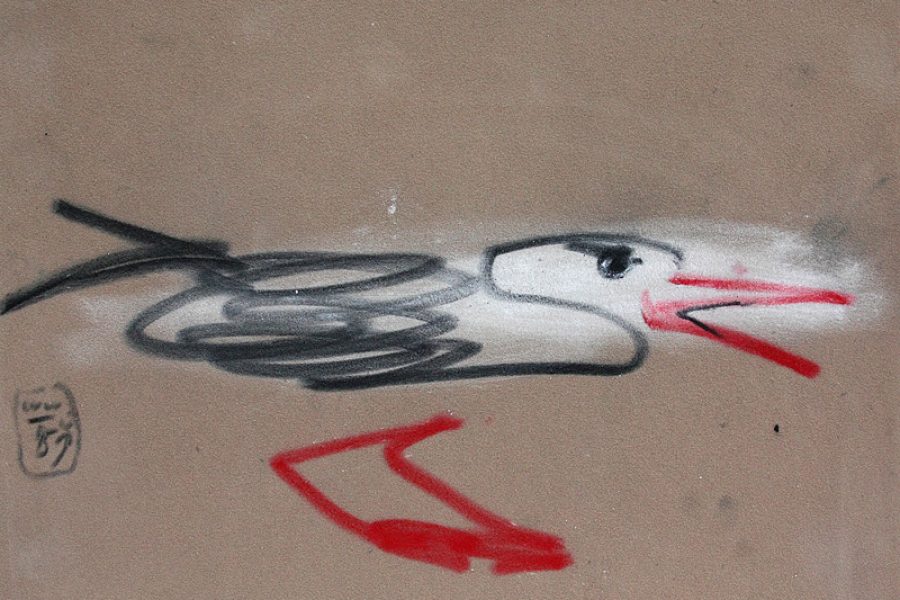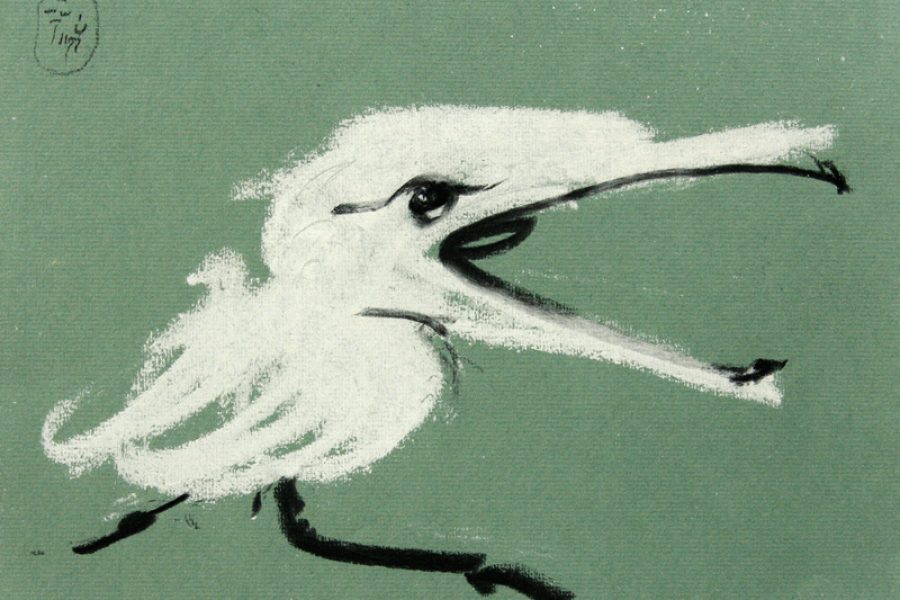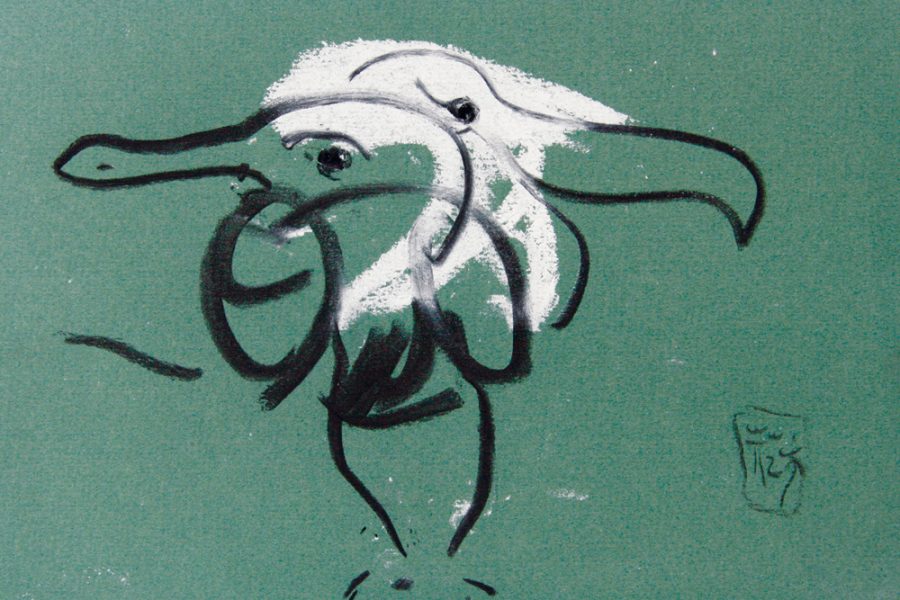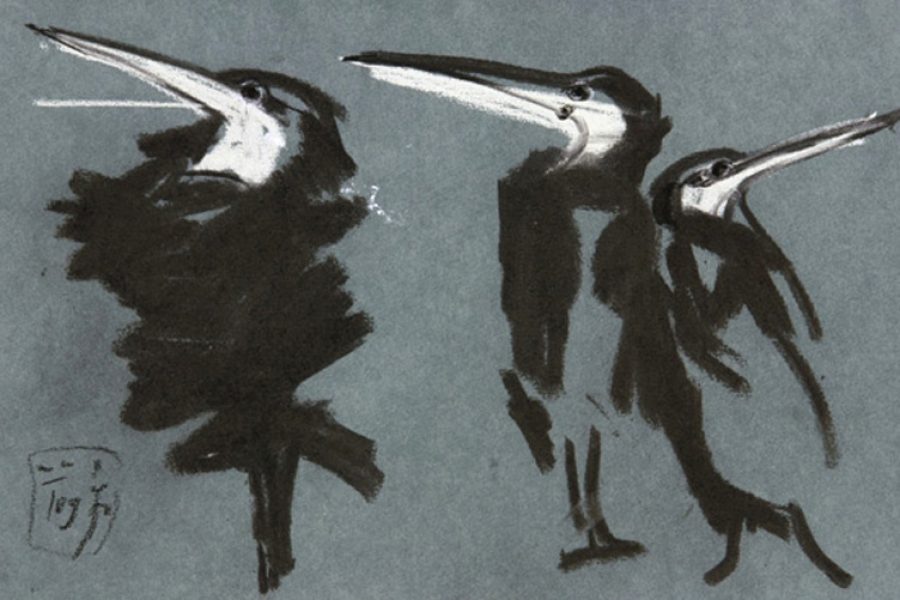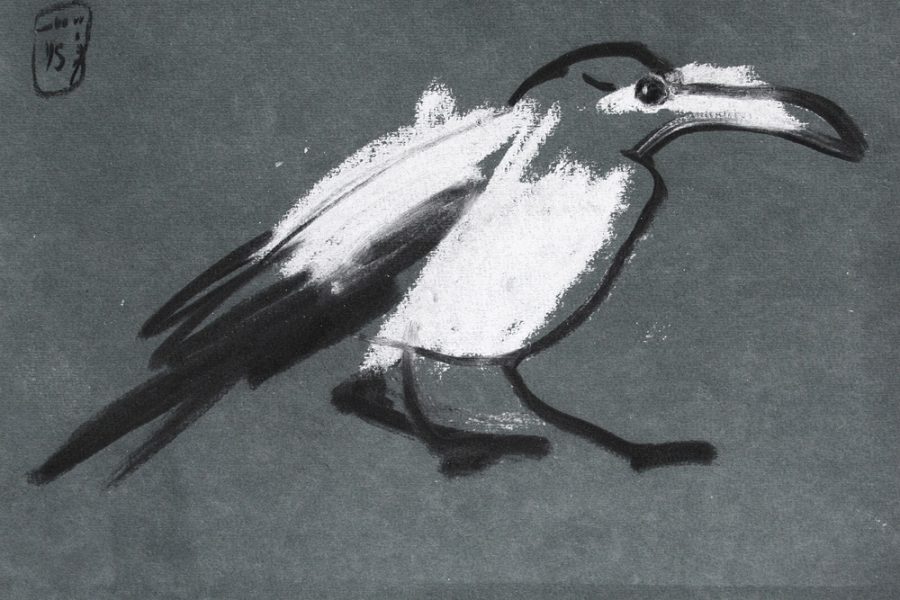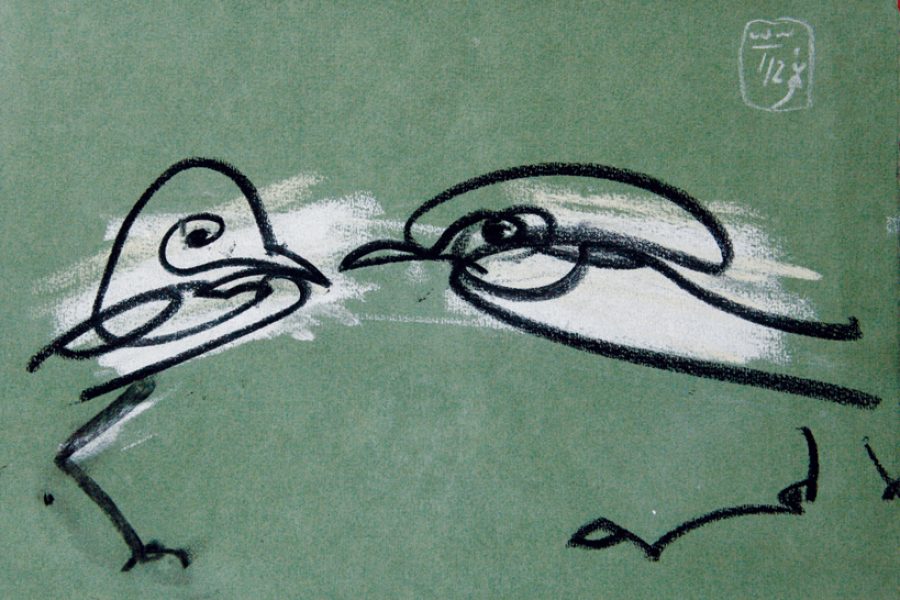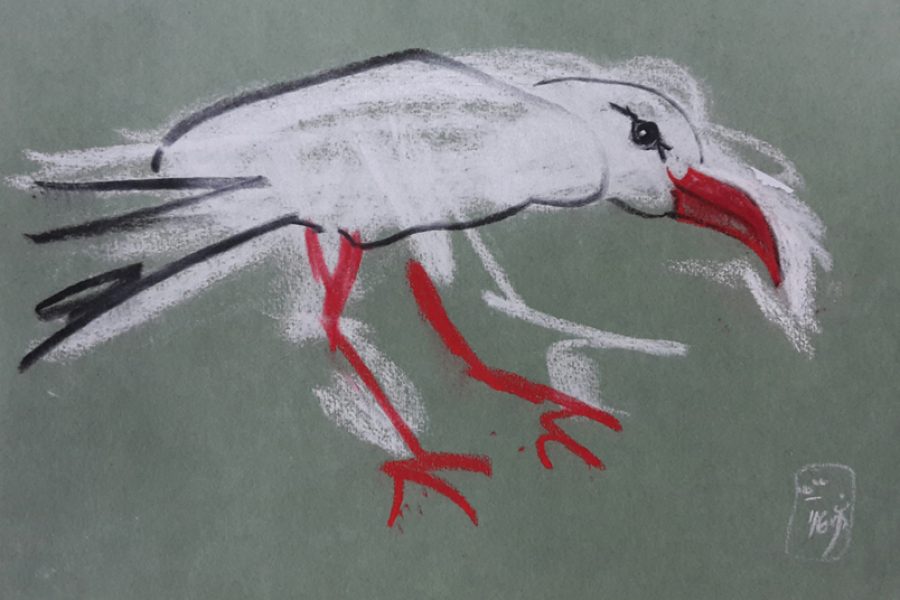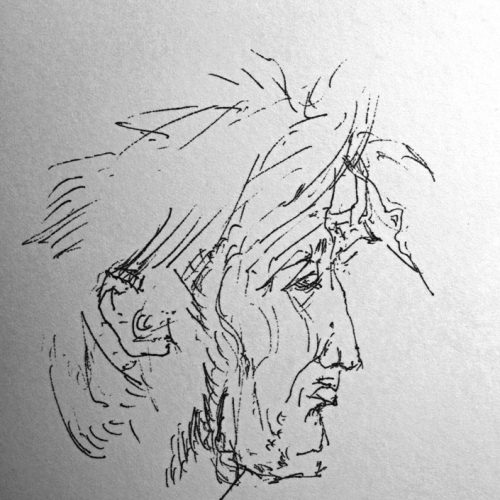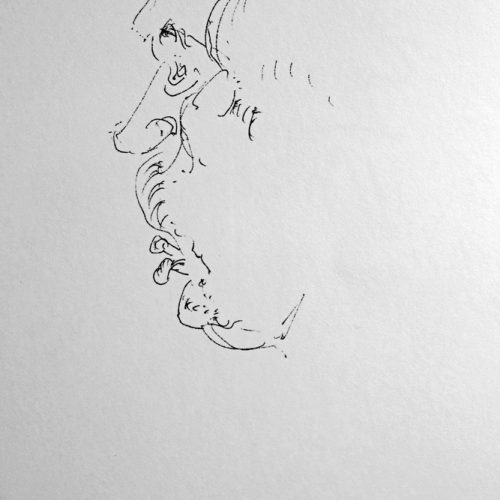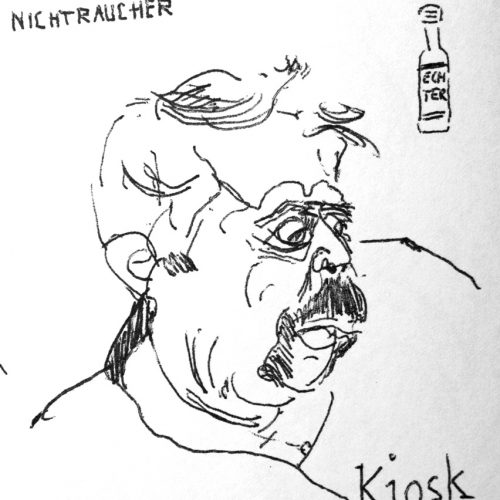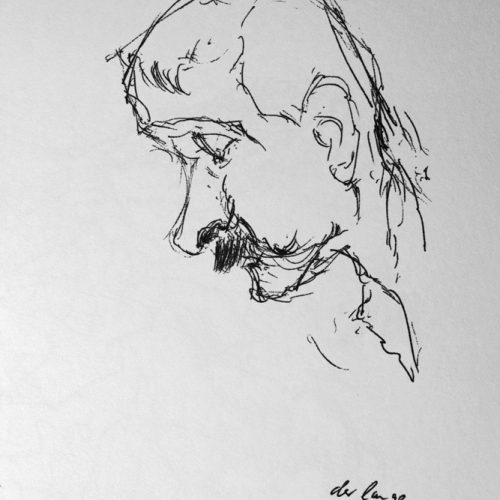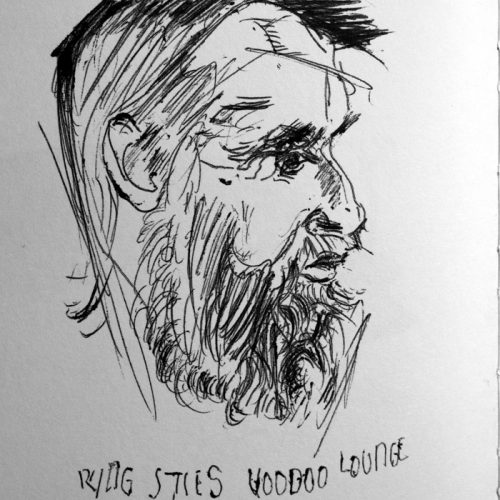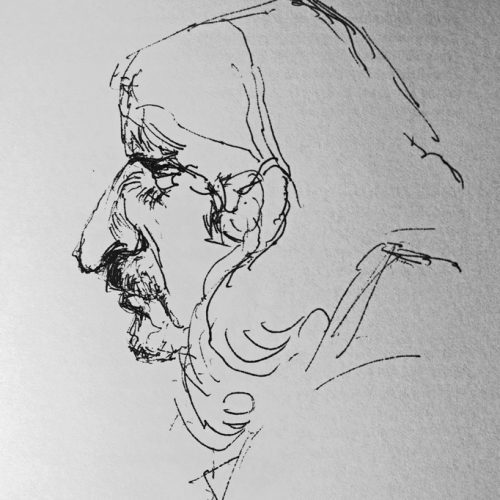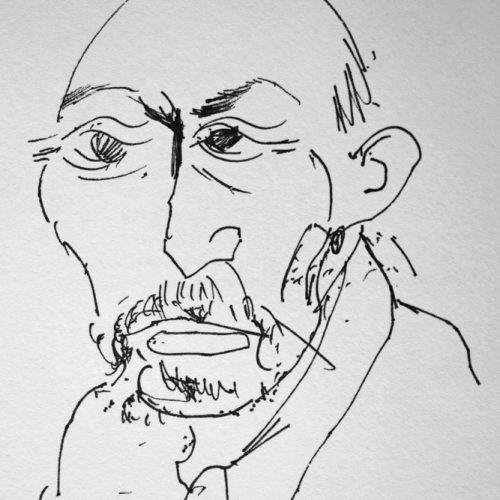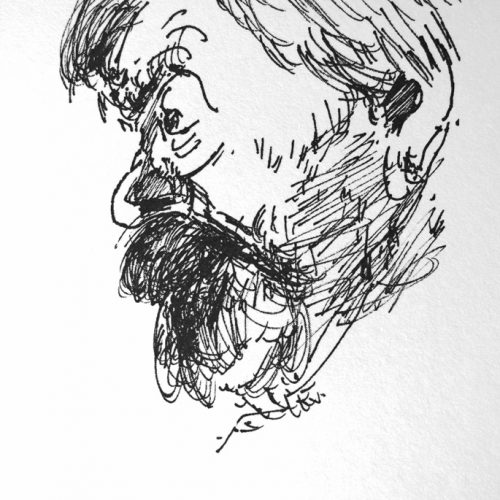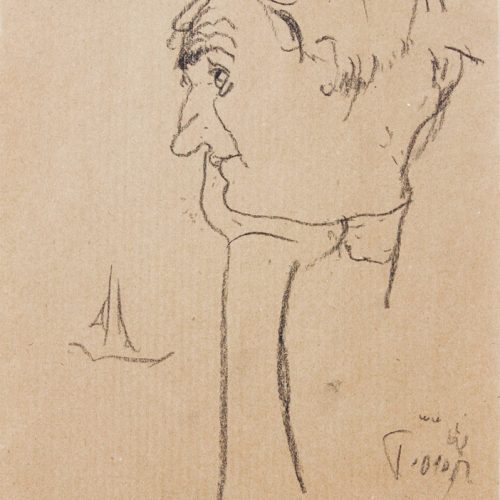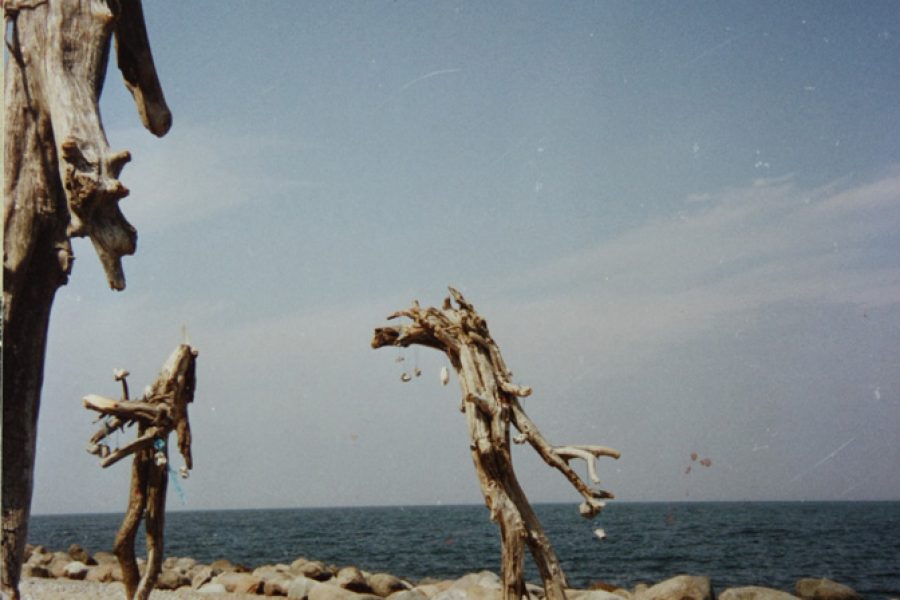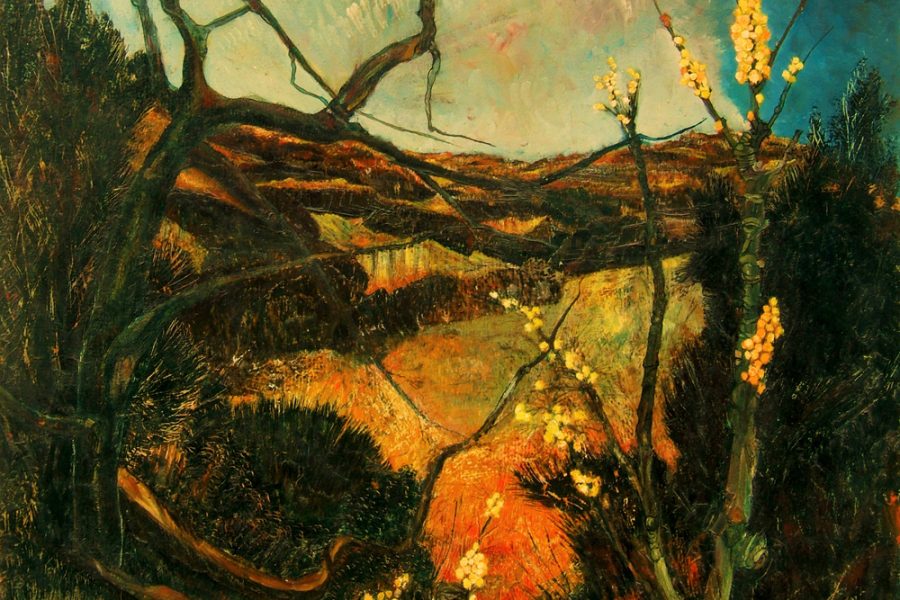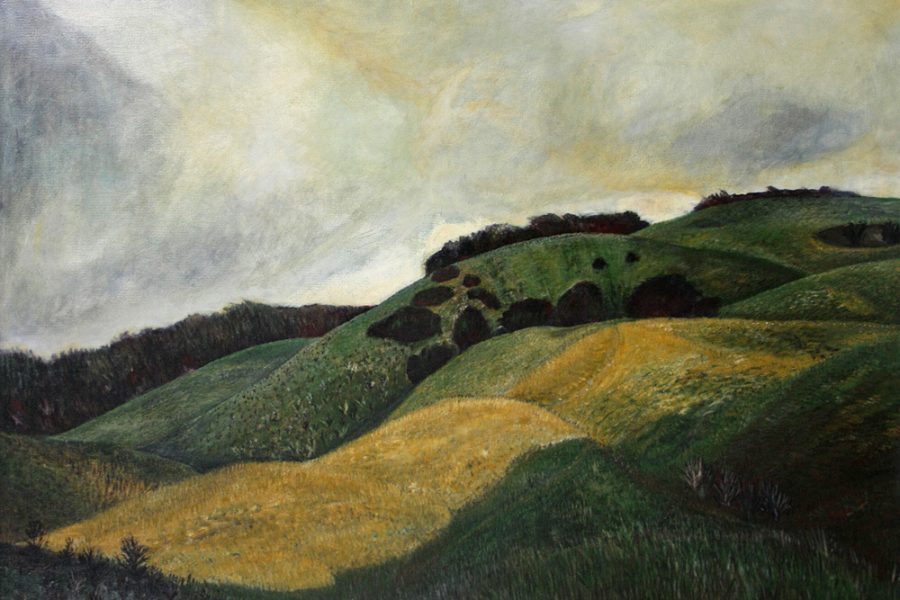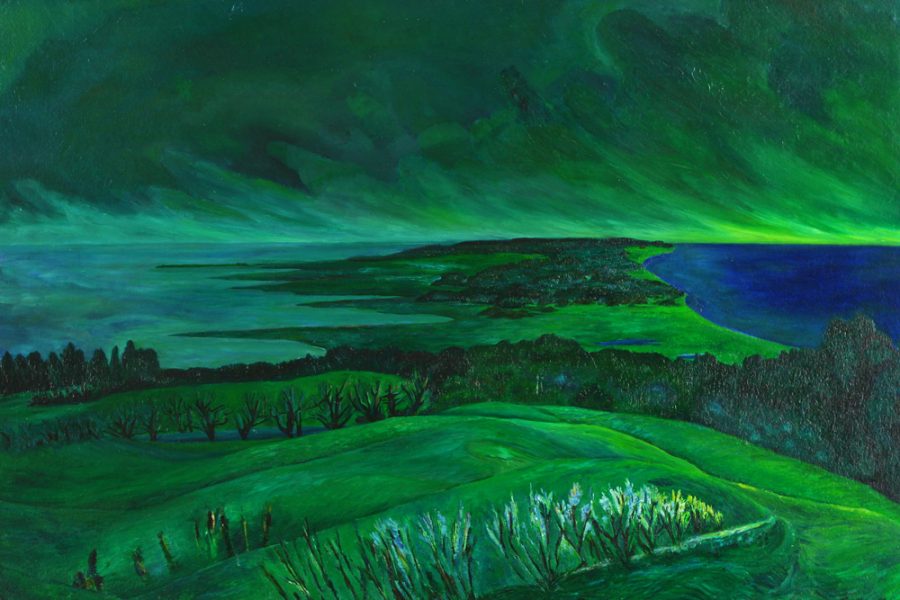“In Schlüter’s watercolors you don’t see everything in detail, but everything essential. It is brilliant imagination. They capture landscapes in seasons, as something passing by. The glow in them becomes a glow in the eyes through his works. Anyone who loves Hiddensee will be enchanted by the way he captures the island.” (Friedrich Schorlemmer in the foreword to Torsten Schlüter’s book NORDLICHTER)
An interview with Torsten Schlüter about the “Hiddensee Art Garden”
The exhibition is different every evening. They sometimes show entire cycles of works. Why?
Certain sequences in particular create a unique approach. Art is actually always revealed through the work as a whole. The more you know about it, the more you can classify and enjoy the individual work as a viewer. It really is a school of seeing, that’s for sure. But it’s important to me that it comes across as light. Without much pathos.
Anyone familiar with your early work will see one thing above all: the works before 1989 were darker in color. That also has to do with your biography and the fall of the Wall?
Yes, my painting has become lighter. Perhaps my experiences in India also play a role. After all, everything is connected.
In the end, however, it is always the light.
How do the pastels with the cheeky seagulls actually get their even cheekier titles?
That’s because I’m presenting the seagulls live on this wall. I also call it my “seagull wall”. When I showed the work there, I sometimes made a spontaneous comment about it. The slogan then often became the title. That has somehow become ritualized. Every seagull has its own identity. But this kind of poetry is actually often a kind of walking aid for the viewer. Or visual aid.
Do sketches play a major role?
The drawing is definitely my training camp! Without the safety in the drawing, I would, for example. I could not approach a Northern Lights watercolor so freely. The exploration of drawing always brings with it new artistic freedom. It is ultimately like this: behind the creation of a watercolor that appears to be “thrown there”, there is ultimately a drawing. I don’t want to correct, never want a “draw”. The painting must be as if from a single source. Instead, the hand practises drawing. On the other hand, I don’t have any preliminary drawings. When I pick up the brush, it’s all about composing and tracking down the light.
Horizons
17.8.2004
“Booty! A silver morning. Lines of sunlight cross Rügen’s sky and draw their traces in the formations of the night on the water. Gradually, the new day breaks through the fog. A first sail glides south with the morning breeze. Land in sight. Before the baker pushes the first sandwiches across the counter, the mood catches on a cross bow.” (from Torsten Schlüter’s Hiddensee notes)
Seagulls
As with the Indian water buffalo or Indonesian cockfighting, Torsten Schlüter prefers to use chalk when he goes “seagull hunting”. For him, there is no way around the seagulls, which he describes as a parallel society.
Watercolors, pastels and flocks of seagulls can be found in Torsten Schlüter’s books“Northern Lights”.
Hiddensee records, primeval stones
Many of these drawings are collected in Torsten Schlüter’s book“Hiddenseer AufZeichnungen“.
